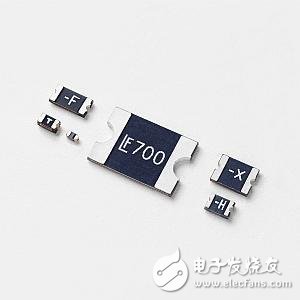If you want to be a successful design engineer, you need to know your enemy. So who is the biggest enemy that hinders your circuit design success? The answer is over current.
An overcurrent occurs when the current in the circuit exceeds the rated current capacity of the circuit or the device connected to the circuit. Whether your circuit is designed for automotive, LED lighting, or consumer electronics, overcurrent can be a threat to the reliability and durability of the technology you are developing. When is the most likely overcurrent? Overcurrent is caused by poor connection, ground fault, short circuit or surge power consumption.
Now that you know your enemy, how do you guard against it in your design? Overcurrent protection is achieved with both conventional fuses and positive temperature coefficient (PTC) devices.
Fuse
A fuse is a current-sensitive device designed to act as a weak link in the circuit. In the event of a current overload, the fuse can provide reliable protection for discrete components or complete circuits by blowing.
PTC device
PTC devices are passive electronic components that are widely used in telecommunications, computers, consumer electronics, batteries, and medical electronics. In these particular applications, overcurrent events are common, and automatic recoverability is what designers expect.

What are the options for fuses and PTC devices?
Fuse and PTC devices each have unique operating characteristics and advantages. Understanding the difference between the two technologies will make the selection process simple – the application decides the choice.
The most obvious difference is that PTC devices are self-resetting, and conventional fuses need to be replaced after tripping. After most overcurrent events occur, the fuse will completely cut off current flow, which may be very beneficial in some critical applications. In contrast, PTC devices significantly increase their resistance, creating overcurrent protection, but still allowing turbulence to pass.
Since the PTC device can be automatically reset, many circuit designers select the PTC device in the event that an overcurrent event may occur due to a user-induced fault. In addition, PTC devices help maintain low warranty and service costs, continuous system uptime, and user transparency. In circuits that are difficult to access or remote, PTC devices are often used because fuse replacement is inconvenient under these conditions.
There are several other operating characteristics that should be considered when choosing between a PTC device and a fuse. For the best safety and reliability, we recommend that you test and verify the performance of your device before using it in your final application.
---------------------------
More power technology hot text can pay attention to the latest "Power Technology Special Issue"
Down Tube Battery,Ebike Lithium Battery,24V Bottle Battery,24V Electric Bicycle Battery
Changxing Deli Technology Co., Ltd. , https://www.delipowers.com